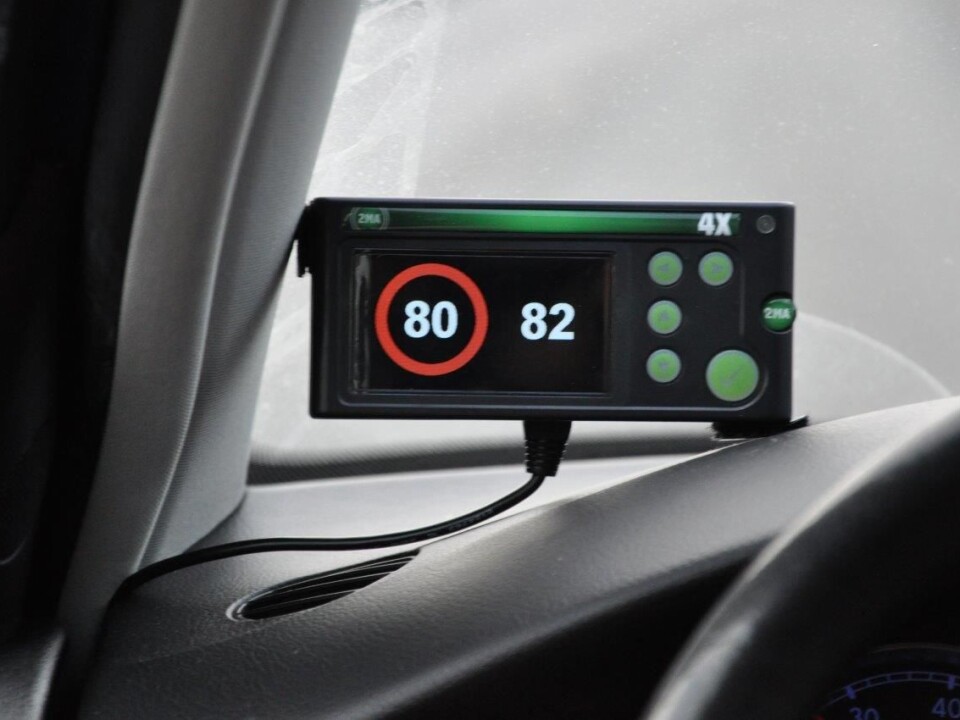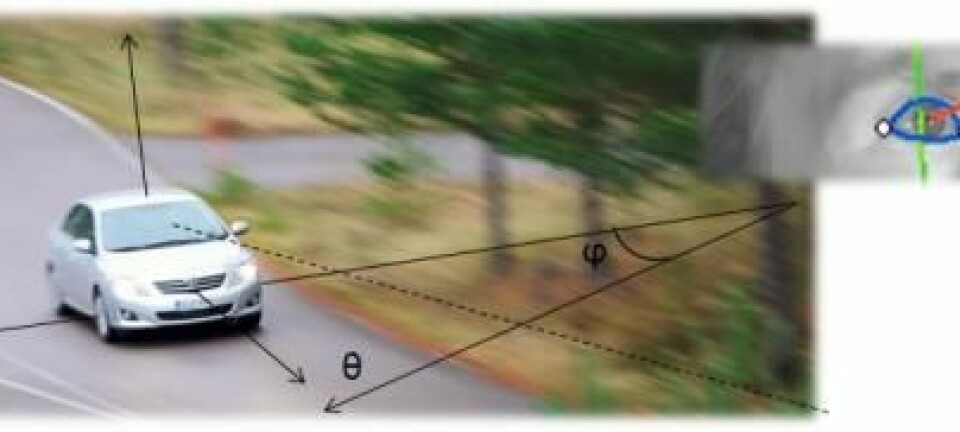An article from Norwegian SciTech News at SINTEF

Speed warning system saves lives and reduces emissions
Using a speed warning system in Norway could reduce both the average speed of vehicles and their emissions, concludes a recent report. Lower speeds also lead to fewer fatalities and serious injuries on the roads.
According to Statistics Norway, more than 2,600,000 private cars were registered in Norway last year. A recent SINTEF report reveals that we could reduce greenhouse gas emissions corresponding to at least 100,000 of these vehicles by adopting the ISA (Intelligent Speed Adaptation) system.
“Our research shows that ISA is a really good way of persuading Norwegian motorists to reduce speed, and thus eliminate a large numbe of the most serious road accidents. It would also reduce greenhouse gas emissions and cut fuel consumption by at least 3.8 per cent,” says SINTEF Senior adviser Terje Moen.
Previous studies have shown that the system can help reduce the number of fatalities and serious injuries on Norwegian roads by 12 per cent.
Helps drivers to observe speed limits
ISA, or Intelligent Speed Adaptation, is a system that monitors local speed limits and helps drivers to observe them.

The system can be operated in three different modes:
- Advisory (or passive): Alerts the driver by means of visual and auditory cues.
- Override: The accelerator (gas pedal) becomes more difficult to press down when the vehicle is being driven too fast, but the driver can choose to override the warning this provides.
- Forced: Limits speed by taking control of the engine so that it is impossible to drive too fast.
"In our research project, we used the advisory mode with auditory and visual display when motorists were driving too fast. GPS was used to determine the position of the vehicle, and the local speed limit was obtained from the National Highways Databank (NVDB). The display indicated the speed limit, and it flashed when this was exceeded. Sound was used to emphasise the warning when the speed limit (the ISA speed limit) was exceeded by four km/h or more,” explains Mohn.
If the system had been used in one of the other two modes, it would probably have had an even greater effect.
Positive effects
SINTEF has drawn up the report on behalf of the Norwegian Public Roads Administration. The researchers took the data used in the study, which lasted for three years between 2011 and 2014, from ISA systems that were installed in 440 of the Public Roads Administration’s own cars.
During the first month of the study, the system was only used to study the driving patterns of our staff; i.e. neither the graphic display nor the sound signal was used. All the drivers were warned in advance that their driving would be monitored.
Thereafter, the ISA was activated, and for the next 33 months data were logged in order to document the effect of ISA on speeds, fuel consumption and greenhouse gas emissions.
ISA has a positive effect on speeding, i.e. the amount of time spent driving above the ISA speed limit. This was reduced from 5.9 to 3.4 per cent, or approximately 2.5 per cent. Fuel consumption and emissions were also both reduced.
The SINTEF researcher believes that the difference would have been even greater if the drivers had not known that their driving behaviour was being monitored during the first month, before the ISA system was activated.
“This may have encouraged our drivers to drive more slowly than they normally would have done. But the significant positive effect on typical speeds that we found when ISA was activated suggests that our results are robust, and are probably underrated rather than exaggerated,” says Moen.
One of the most effective systems
Arild Ragnøy, a chief engineer with the Norwegian Public Roads Administration, says that ISA is one of the most effective speed control systems available.
“The results of the SINTEF report show that ISA would probably have a positive effect on the number of accidents caused by excessive speed under given conditions,” concludes Ragnøy.
“Forced ISA is easiest to measure, since it is a simple matter to eliminate all the accidents caused by driving faster than the speed limit. A study carried out by the Institute of Transport Economics showed that 12 per cent of all fatalities and serious injuries on Norwegian roads could have been avoided if all private cars used ISA. This figure would have been lower using ISA’s advisory mode, but there would still have been an effect,” emphasises Ragnøy.
Friendly helper or intrusive control?
The development of ISA started at the end of the 90s, and the system has been tested in several European countries since the turn of the century.
“The system has proved to be very effective, but the question is whether people will accept their car overriding their desire to drive too fast. I can’t imagine a politician daring to adopt compulsory use of ISA in all the cars in the country, even though the system has the potential to eliminate all speeding behaviour,” says Moen.
However, the SINTEF researcher believes that the system can be a useful aid for law-abiding motorists who want to avoid driving too fast.
Many people find that driving with ISA is a pleasant experience, particularly on stretches of road where the speed limit changes frequently. And in the transport industry, the system could help to reduce stress in drivers who feel obliged to drive too fast in order to keep to timetables, whether they are driving buses or delivery vans. ISA could thus be a good means of satisfying HSE requirements for companies that are keen to do so.
Transport industry customers can also be encouraged to buy transport services from companies that can document that they observe speed limits.
































